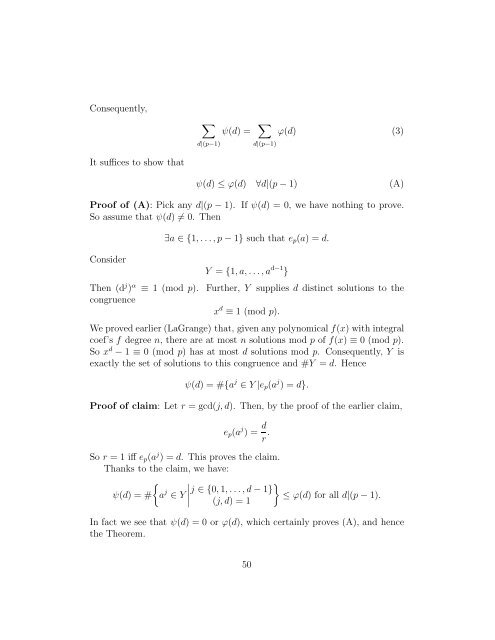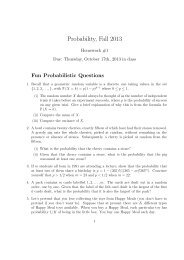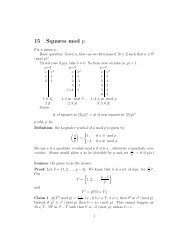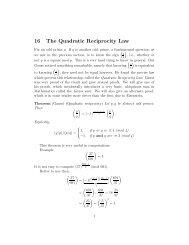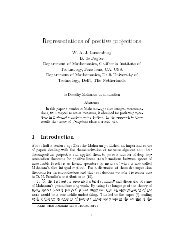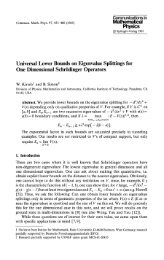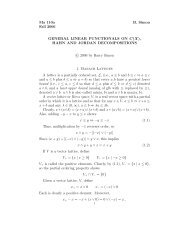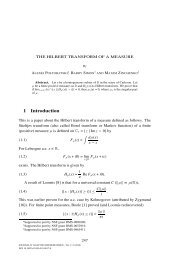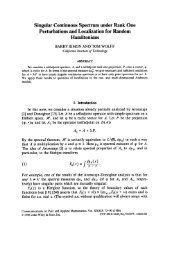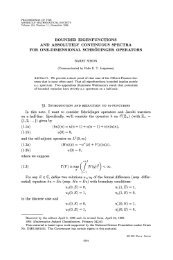1 Basic Notions - Caltech Mathematics Department
1 Basic Notions - Caltech Mathematics Department
1 Basic Notions - Caltech Mathematics Department
You also want an ePaper? Increase the reach of your titles
YUMPU automatically turns print PDFs into web optimized ePapers that Google loves.
Consequently,<br />
It suffices to show that<br />
<br />
d|(p−1)<br />
ψ(d) = <br />
d|(p−1)<br />
ϕ(d) (3)<br />
ψ(d) ≤ ϕ(d) ∀d|(p − 1) (A)<br />
Proof of (A): Pickanyd|(p − 1). If ψ(d) = 0, we have nothing to prove.<br />
So assume that ψ(d) = 0. Then<br />
Consider<br />
∃a ∈{1,...,p− 1} such that ep(a) =d.<br />
Y = {1,a,...,a d−1 }<br />
Then (d j ) α ≡ 1(modp). Further, Y supplies d distinct solutions to the<br />
congruence<br />
x d ≡ 1(modp).<br />
We proved earlier (LaGrange) that, given any polynomical f(x) withintegral<br />
coef’s f degree n, there are at most n solutions mod p of f(x) ≡ 0(modp).<br />
So x d − 1 ≡ 0(modp) has at most d solutions mod p. Consequently, Y is<br />
exactly the set of solutions to this congruence and #Y = d. Hence<br />
ψ(d) =#{a j ∈ Y |ep(a j )=d}.<br />
Proof of claim: Letr =gcd(j, d). Then, by the proof of the earlier claim,<br />
ep(a j )= d<br />
r .<br />
So r =1iffep(aj )=d. Thisprovestheclaim.<br />
Thanks to the claim, we have:<br />
<br />
ψ(d) =# a j <br />
<br />
<br />
∈ Y j<br />
∈{0, 1,...,d− 1}<br />
≤ ϕ(d) for all d|(p − 1).<br />
(j, d) =1<br />
In fact we see that ψ(d) =0orϕ(d), which certainly proves (A), and hence<br />
the Theorem.<br />
50


